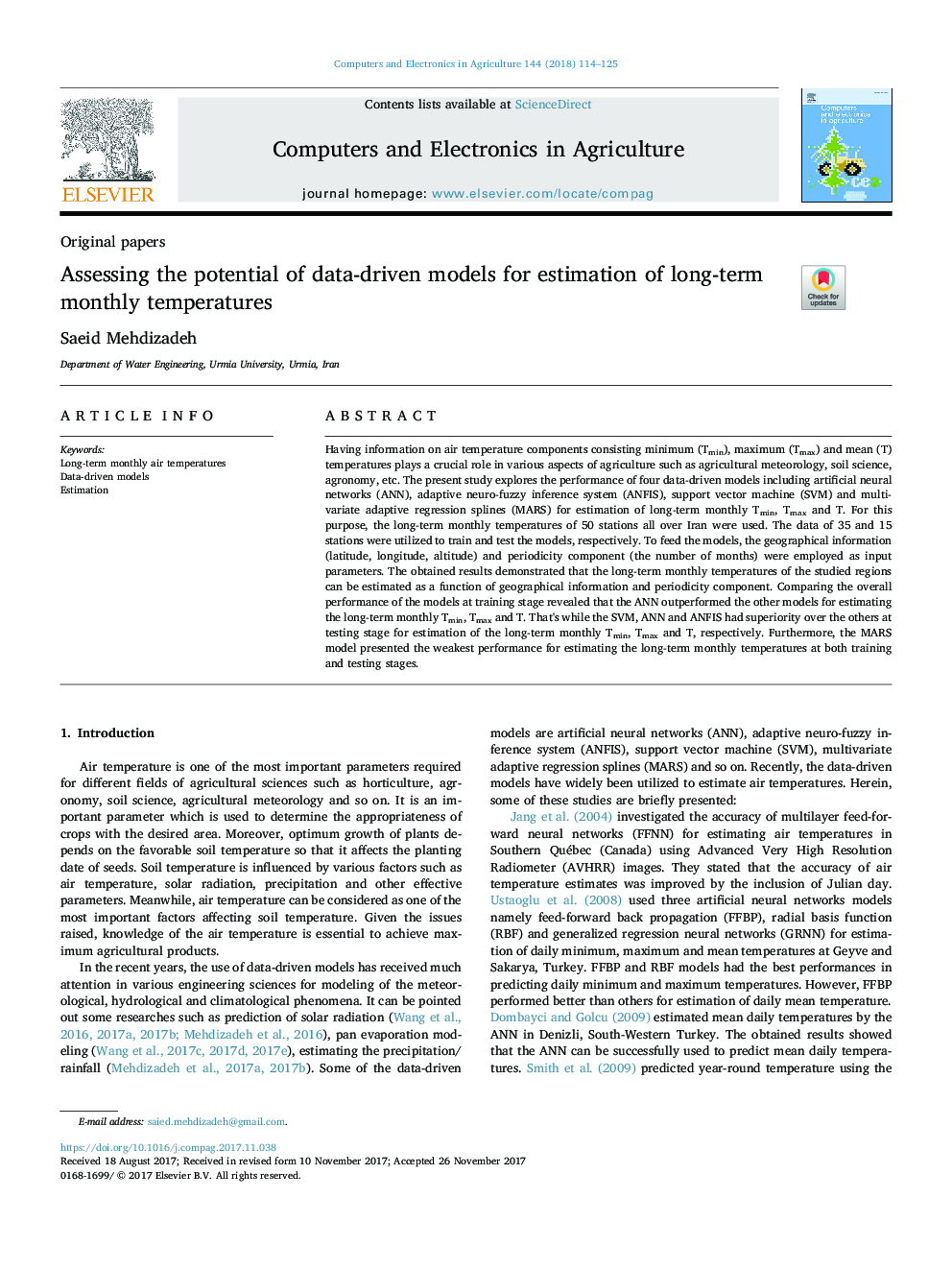| Article ID | Journal | Published Year | Pages | File Type |
|---|---|---|---|---|
| 6539874 | Computers and Electronics in Agriculture | 2018 | 12 Pages |
Abstract
Having information on air temperature components consisting minimum (Tmin), maximum (Tmax) and mean (T) temperatures plays a crucial role in various aspects of agriculture such as agricultural meteorology, soil science, agronomy, etc. The present study explores the performance of four data-driven models including artificial neural networks (ANN), adaptive neuro-fuzzy inference system (ANFIS), support vector machine (SVM) and multivariate adaptive regression splines (MARS) for estimation of long-term monthly Tmin, Tmax and T. For this purpose, the long-term monthly temperatures of 50 stations all over Iran were used. The data of 35 and 15 stations were utilized to train and test the models, respectively. To feed the models, the geographical information (latitude, longitude, altitude) and periodicity component (the number of months) were employed as input parameters. The obtained results demonstrated that the long-term monthly temperatures of the studied regions can be estimated as a function of geographical information and periodicity component. Comparing the overall performance of the models at training stage revealed that the ANN outperformed the other models for estimating the long-term monthly Tmin, Tmax and T. That's while the SVM, ANN and ANFIS had superiority over the others at testing stage for estimation of the long-term monthly Tmin, Tmax and T, respectively. Furthermore, the MARS model presented the weakest performance for estimating the long-term monthly temperatures at both training and testing stages.
Keywords
Related Topics
Physical Sciences and Engineering
Computer Science
Computer Science Applications
Authors
Saeid Mehdizadeh,
